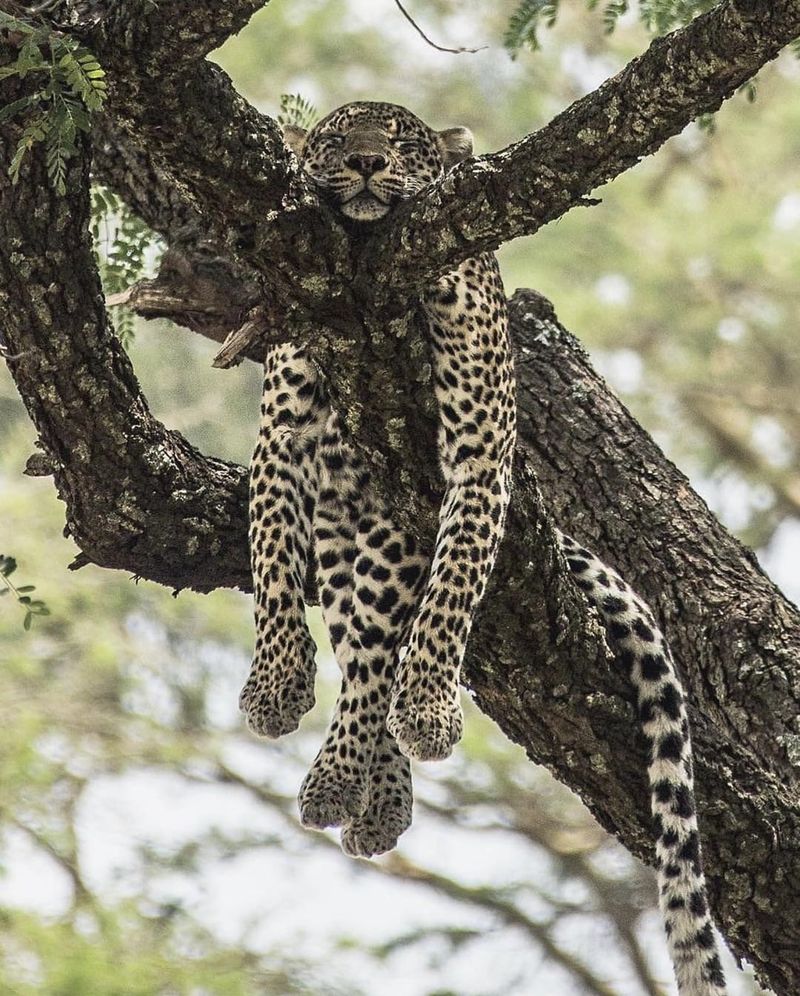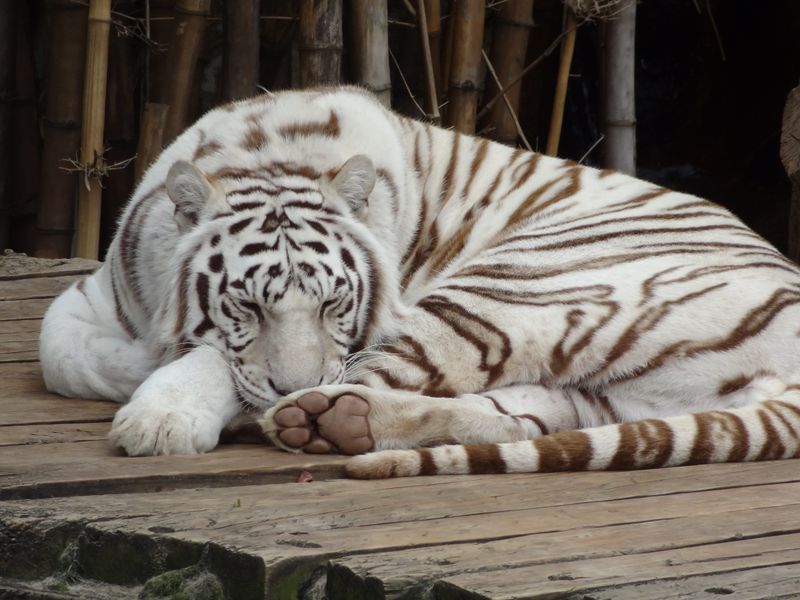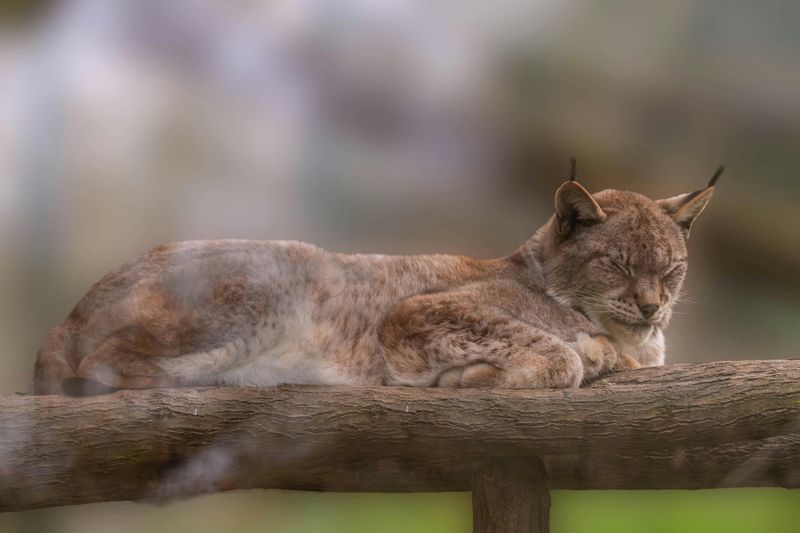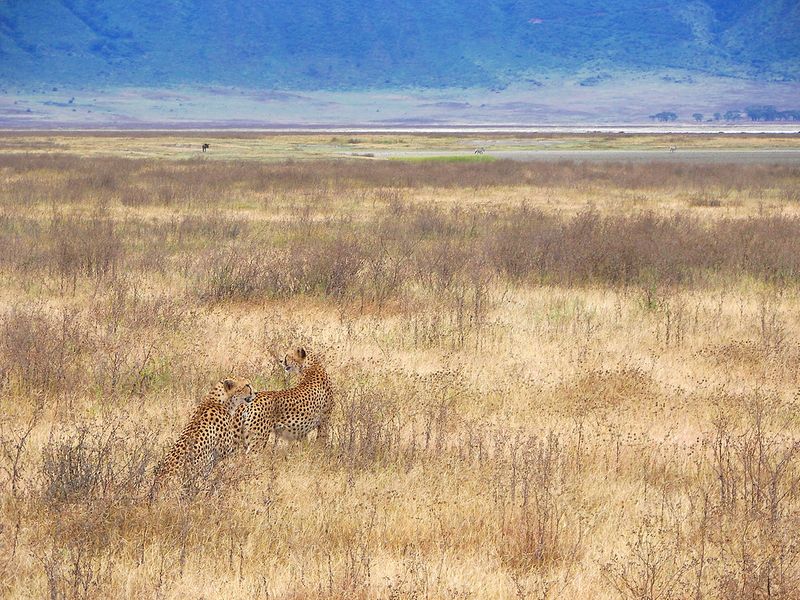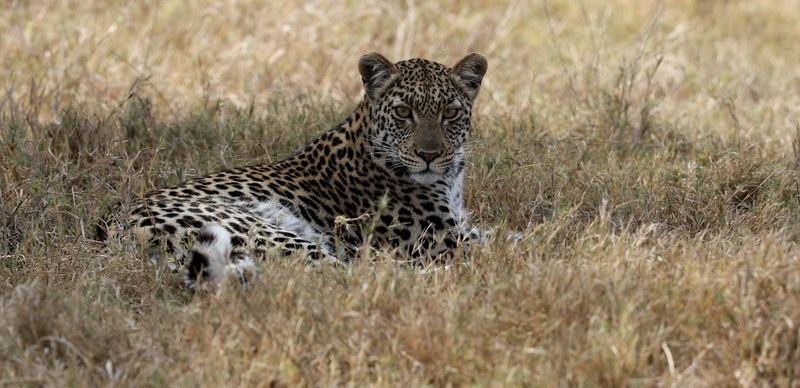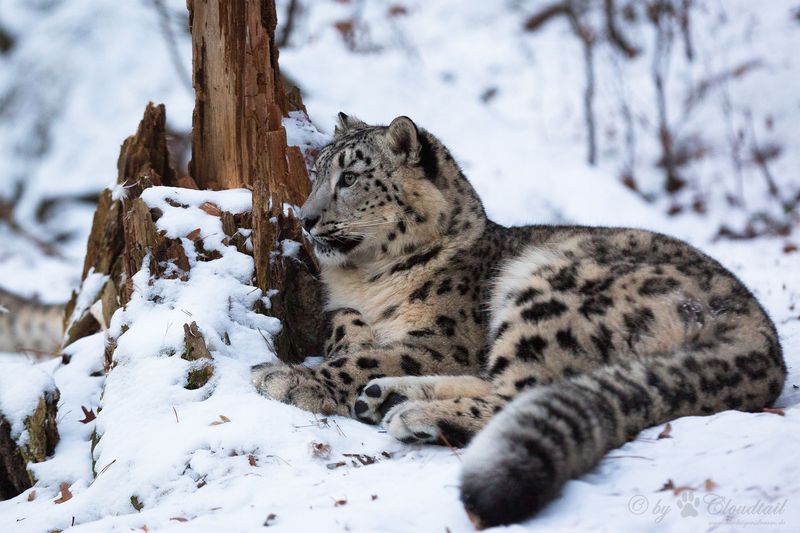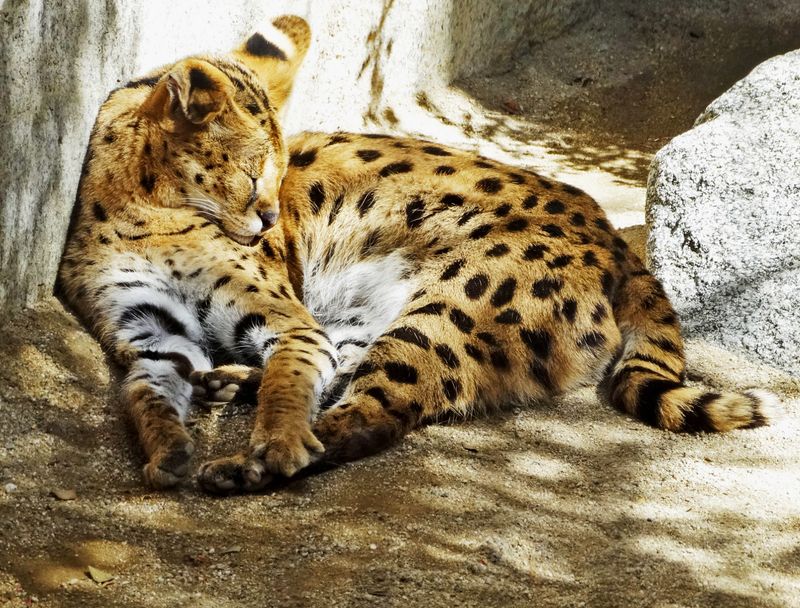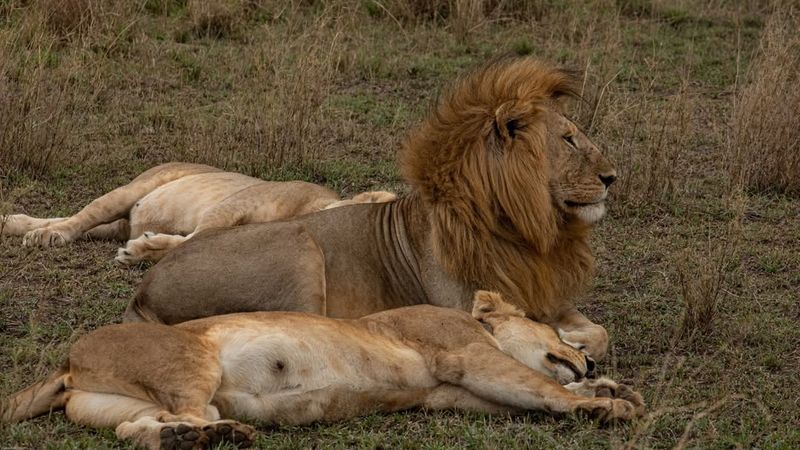📖 Table of Content:
- 1. Strategic Spot Selection
- 2. Energy-Saving Posture
- 3. Built-in Surveillance
- 4. Temperature Tuning
- 5. Micro-Naps on the Move
- 6. Quiet Zones Only
- 7. Environment Blending
- 8. Body Language of Relaxation
- 9. Natural Rhythms
- 10. Selective Vulnerability
- 11. Quick Recovery
- 12. Harmonious with Nature
- 13. Body Temperature Regulation
- 14. Adaptive Positioning
- 15. Secret Communal Napping
These agile creatures have developed sleep habits that not only ensure they get adequate rest but also allow them to remain constantly alert. Their naptime routines are a perfect blend of relaxation and readiness, demonstrating a unique balance between repose and vigilance. The way these cats manage to sleep while keeping a keen sense of their surroundings is a testament to their evolutionary prowess.
Found across a wide range of habitats, wild cats have adapted their napping techniques to suit the environment around them. They often choose secluded spots that offer both comfort and strategic concealment, which helps them evade potential threats. In these varied settings, from sunlit clearings to shadowy underbrush, their sleep patterns are finely tuned to the demands of nature. This adaptability in choosing resting places highlights their ability to thrive even in the most challenging ecosystems.
Each aspect of their napping behavior unveils a deeper layer of their survival strategy. The secrets behind their sleep routines reveal not only a quest for comfort but also a calculated effort to maintain readiness for sudden action. These patterns are integral to their status as apex predators, ensuring they are always prepared to react when opportunity or danger arises. Ultimately, the way wild cats nap underscores their remarkable blend of survival instincts and the innate need for rest.
1. Strategic Spot Selection
They choose their napping sites with precision, often opting for places that provide natural cover or elevation. Strategic spot selection is a hallmark of wild cats. This choice is not merely about comfort; it’s a clever strategy to remain hidden from both predators and prey. By blending into their surroundings, they ensure safety while catching some crucial rest. Whether it’s the dense foliage of a forest or the elevated perch of a rocky outcrop, each spot is meticulously chosen to serve dual purposes of comfort and concealment, allowing these solitary hunters to recharge in peace.
2. Energy-Saving Posture
When they nap, they often curl up tightly. This position reduces heat loss and effectively protects their vital organs. It’s a survival tactic that reflects their need to conserve energy for the demanding tasks of hunting and territorial defense. Curled up into a compact ball, they minimize exposure to the elements, staying warm and secure. This posture not only aids in maintaining body temperature but also signifies a state of relaxed vigilance, where the cat is ready to spring into action if needed.
3. Built-in Surveillance
Built-in surveillance is a fascinating aspect of wild cats’ napping behavior. Even in deep sleep, these creatures exhibit signs of alertness. Their half-closed eyes and twitching ears are not just random movements. These subtle gestures keep them in tune with their environment. While appearing restful, the cat is ready to respond to any sudden movements or sounds nearby. This form of vigilance allows them to enjoy the benefits of sleep without compromising safety. It’s an instinctive adaptation that highlights their role as both predator and prey in the ecological chain.
4. Temperature Tuning
Wild cats instinctively choose napping spots that correspond to the day’s temperature. On cooler days, they might be found basking on sunny rocks, absorbing warmth. Conversely, during hotter periods, they retreat to shaded areas, escaping the scorching heat. This behavior ensures they maintain a comfortable body temperature while resting. By aligning with natural temperature variations, wild cats optimize their rest periods, making sure they’re always at peak readiness for their next hunt or territorial patrol.
5. Micro-Naps on the Move
Micro-naps on the move are a testament to the flexibility of wild cats. Instead of indulging in prolonged slumber, they take several short, strategic naps throughout the day. This pattern helps keep their reflexes sharp and their senses honed. Each nap, though brief, is efficient, providing just enough rest without making them vulnerable. This napping strategy is an adaptation to their often unpredictable environment, where opportunities and threats can arise unexpectedly. By mastering the art of quick, effective naps, wild cats maintain their edge in both hunting and survival.
6. Quiet Zones Only
Quiet places are the preferred napping spots for wild cats, who are notoriously light sleepers. Any slight noise is enough to rouse them from their slumber. This sensitivity to sound ensures they’re always prepared for an unexpected opportunity or threat. By selecting areas where silence prevails, they maximize their rest while remaining vigilant. These quiet zones are often deep within forests or secluded in the expansive savannah, where the ambient noise is minimal. The preference for silence underscores their constant need to balance rest with readiness, a key survival trait.
7. Environment Blending
Blending into the nature is a sophisticated napping strategy for wild cats. When they choose a spot to rest, it’s not just about comfort—it’s a tactical decision. Their chosen napping area often serves as camouflage, allowing them to remain unnoticed by both prey and predators. Whether nestled in tall grass or within the pattern of dappled sunlight, their fur patterns blend seamlessly with the surroundings. This camouflage is a natural defense mechanism, providing safety while they rest. It’s a remarkable adaptation that showcases their ability to integrate with their environment seamlessly.
8. Body Language of Relaxation
Body language of relaxation is evident in napping wild cats. The sight of their relaxed muscles and slow breathing is a subtle indicator of their trust in the environment. When wild cats nap, their body language communicates a sense of security and calm. It’s a moment where they let their guard down, albeit temporarily, to recharge. This relaxed state is achieved only when they feel assured of their safety. Observing these relaxed postures offers insight into the wild cat’s environment and its perceived safety, revealing much about their survival strategies and social interactions.
9. Natural Rhythms
Natural rhythms guide the napping habits of wild cats. These creatures follow circadian rhythms with precision, balancing rest with bursts of energy during prime hunting periods. Their internal clocks are finely tuned to the cycles of light and darkness, influencing when and where they nap. This adherence to natural rhythms ensures they are active during times when prey is most available, optimizing their hunting success. By aligning their naps with these natural cycles, wild cats maintain a harmonious balance between rest and activity, a crucial aspect of their survival in the wild.
10. Selective Vulnerability
They possess the keen ability to determine when to let down their guard and when to stay partially awake. Depending on the perceived safety of their surroundings, they may allow themselves to enter a deeper sleep or remain in a state of semi-awareness. This selective vulnerability is an adaptive strategy that balances their need for rest with their instinct for survival. It demonstrates their acute awareness of their environment and their ability to adjust behavior to minimize risk, maintaining their role as vigilant predators.
11. Quick Recovery
Quick recovery from naps is a vital skill for wild cats. Their naps are designed to allow for immediate wakefulness, ensuring they can respond swiftly to any changes in their environment. Even a brief nap rejuvenates them without leaving them groggy. This ability to transition quickly from rest to alertness is crucial for their survival, allowing them to seize opportunities or react to threats instantly. It reflects their high adaptability and readiness, traits that are essential for thriving in the unpredictable wilderness where every moment can be a matter of life or death.
12. Harmonious with Nature
Wild cats prefer areas near water or where gentle breezes flow, as these elements not only provide comfort but also help mask any rustling sounds they might make. This harmony with nature enhances their ability to rest without drawing attention. The ambient natural sounds create a serene environment that aids in relaxation while maintaining a level of concealment necessary for their safety. It’s an exquisite balance of comfort and caution that embodies their connection with the natural world.
13. Body Temperature Regulation
Temperature regulation is a critical aspect of wild cats’ napping behavior. Curling up tightly not only helps conserve energy but also aids in maintaining a steady body temperature amidst fluctuating climates. In cooler conditions, this compact posture reduces heat loss, while in warmer settings, they might stretch out to dissipate heat. This regulation is vital for their comfort and survival, ensuring they remain agile and ready. The ability to adjust their posture according to the climate showcases their innate adaptability and their physiological synchronization with the environment they inhabit.
14. Adaptive Positioning
This enables them to quickly transition from rest to action. Depending on the threat level, they can change from a fully relaxed position to a ready-to-pounce posture within seconds. This adaptability is a testament to their evolutionary refinement, allowing them to conserve energy while still being prepared for immediate response. Their musculature and reflexes are fine-tuned to facilitate this rapid switching, ensuring they can capitalize on hunting opportunities or evade danger. It’s a dynamic balance of rest and readiness that defines their existence.
15. Secret Communal Napping
Secret communal napping is an intriguing behavior observed in some wild cat species. Close companions might choose to nap near each other, reinforcing social bonds and collective vigilance while resting. This communal aspect provides not only emotional comfort but also a tactical advantage, as multiple sets of eyes and ears can enhance their awareness of potential threats. Such napping arrangements are common in environments where social structures are more defined. They reflect an evolutionary adaptation that combines individual relaxation with group safety, highlighting the complexity of their social interactions and survival strategies.

